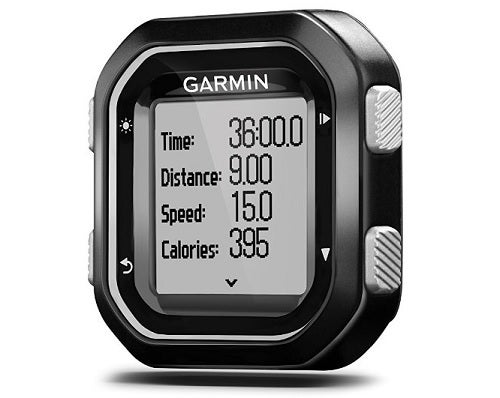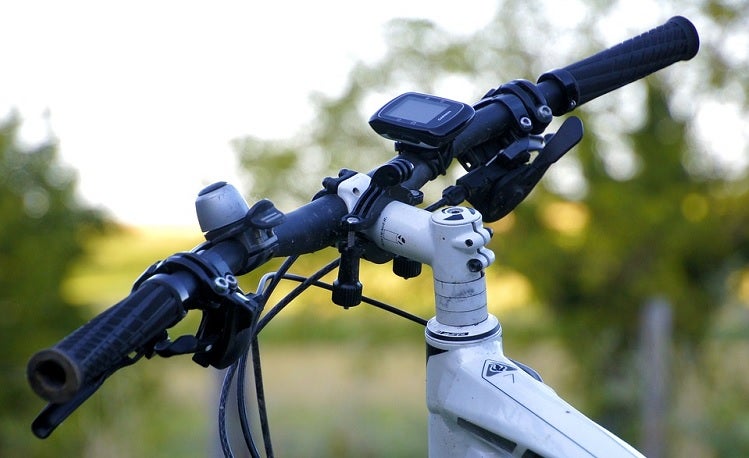
Our Editors independently research, test, and rate what we feel are the best products. We use affiliate links and may receive a small commission on purchases.
Having the best bike computer can make your ride a lot more enjoyable by keeping track of your progress, where you have been, navigation and speed.
But bike computers vary widely in price and features, how do you know which one to buy? With prices coming down and features increasing they are becoming very popular.
To help you make an informed decision we evaluated several of the most popular brands and give you our top picks.
Quick Answer: The 5 Best Rated Bike Computers For 2021
- Garmin Edge 810 Bike Computer With GPS
- Magellan Cyclo 315 GPS Cycling Computer
- Garmin Edge 25 Cycling GPS
- Lezyne Power GPS Bike Computer
- Raniaco Bike Computer
For more of my top bike gear recommendations, have a look through these popular Outside Pursuits guide links: Bike Helmets, Bike Racks, Bike Headlights.
Best Bike Computers
Our reviews of the top rated bike computers with our guide and comparison table will help you choose the right one for you.
Bike Computer Reviews
#1 Garmin Edge 810 GPS Bike Computer
- Garmin Connect: instantly upload ride data
- Turn by turn navigation
- Garmin Custom Maps and BirdsEye Satellite Imagery
- Live-tracking, instant upload and ride sharing capabilities
- ANT+ and bluetooth compatible
The Edge 810 is arguably the best bike computer on the market. It has many sophisticated features, and offers many benefits to bikers of any type. It also includes many functions that are unique to Garmin that make riding more fun.
With the Garmin 810, you are able to live-track all of your rides and record your routes as you travel.
You can then instantly share and upload your rides to social media, or upload other ride data to the Garmin Connect Mobile app on your phone. These features truly set this bike computer apart from the rest.
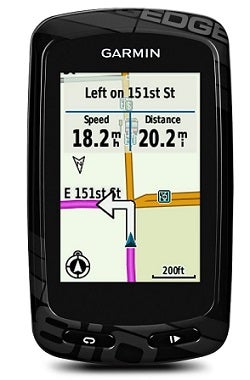
Plus, in addition to monitoring the incline, speed, elevation and distance of your rides, the Garmin 810 bike computer is compatible with ANT+ sensors that measure your heart rate, speed/cadence and power.
In terms of ANT+ compatibility and ease of use, I think the Garmin 810 is the best cycling computer with cadence and heart rate functionality.
You can access all of this data immediately after finishing your ride, and you can also log or share your most recent rides with your friends.
One of the best features in my opinion is the ability for people to see your ride as you are doing it.
All you have to do is share a link with anyone you want to see your ride, then they just goto the Garmin Connect tracking page and they can follow your ride in real time.
The Garmin Edge also offers options for navigation such as street and topo maps.
You can also sync it with the Garmin Custom Maps app or the BirdsEye Satellite Imagery app if you would like access to your own customized maps.
All of these features are easy accessible via the bike computer’s simple touchscreen interface.
The screen displays basic directional arrows for smooth navigation that makes locating the most important information quick and easy!
Video: Overview of the Garmin Edge 810.
Costing almost $300, this bike computer is a bit expensive, but it is worth it. The Garmin Edge 810 GPS Bike Computer has more features and one the easiest to use bike computers on the market.
You won’t have to worry about manually keeping track of your riding data, or keeping separate logs. This bike computer does all the work for you!
I think this is best bike computer for road bike use with its mapping capabilities and turn by turn navigation.
#2 Magellan 315hc GPS Cycling Computer
- Create up to 6 custom cycling profiles
- Preloaded US road maps
- Shimano Di2 compatibility
- ANT+ sensor support
- Turn by turn Navigation
Cyclo 315hc is good option for any serious biker looking to see how they are progressing. This computer is appropriate for road bicycling, mountain biking and anyone just wanting information about their rides.
The Magellan Cyclo is a feature rich bike computer and we’ll summarize its main features.
First of all, this bicycle computer includes 6 custom cycling profiles which you can create to display the best routes specifically designed for your route.
If you are going to be mountain biking, the profiles will even inform you of how much of the route is dirt versus paved roads.
After you input the distance or time you wish to ride, Cyclo will provide 3 different routes for you to choose from. Cyclo will also inform you of the elevation, difficulty, and terrain of each path, so you can make the decision that best suits your goals.
Video: Overview of the Magellan Cyclo.
Cyclo also includes a complete USA road network with audible navigation that instructs you turn by turn. You may also be able to find some new routes, and share your own with other bikers for comparison.
Some of its most popular features are the heart rate monitor, speed sensor, and battery alert system. The in and out mounts are also universal, and the computer is waterproof, so you do not have to worry about ruining it while riding in the mud or rain.
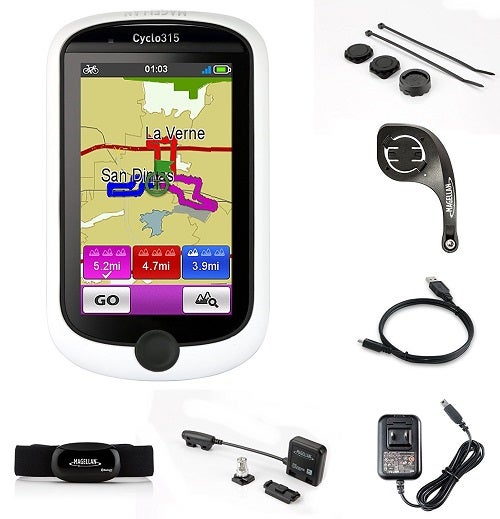
The computer is large enough so you can see the screen comfortably, but also small enough to not get in the way. Above all, the interface is very user-friendly and simple to learn. You will have no problem navigating the menus.
With the Magellan Cyclo 315hc you get a very capable bike computer at an affordable price. Simply put, this is the best budget bike computer.
#3 Garmin Edge 25 Cycling GPS
This micro-sized bike computer is an excellent option for the bike rider looking for a compact device to monitor and track their rides.
The Garmin Edge 25 Cycling GPS weighs only 0.9 ounces, which also makes it perfect for traveling. It has a small, but very readable display showing you all the information you need at a glance.
This miniature bike computer is one of the first of its kind to also include the +GLONASS function, which allows riders to acquire satellites very quickly and keep a satellite lock even when you are under trees and have tall buildings around.
You can track how far, how fast, and where you ride at the touch of a button.
Even at a bargain price it has features of more expensive bike computers like ANT+ heart rate and cadence compatibility.
It is also Bluetooth compatible and provides live tracking with automatic uploads to Garmin Connect so your family and friends can follow your ride real time!
The Garmin Edge 25 Cycling GPS is also equipped with multiple connect functions, which allows users to download new courses, share their rides, track their routes, and network with friends and family.
This bike computer also has a simple and user-friendly interface. You won’t have to spend very much time learning how to navigate this device to get the most out of it.
Video: Overview of the Garmin Edge 25.
Other bike computers can be very complex and time consuming to learn. The Edge 25 is perfect if you want something quick and easy to use and aren’t looking to spend a lot of money.
In my opinion the Garmin Edge 25 is the best mountain bike computer, its rugged, small and has a solid mounting bracket for attachment to your handlebars.
#4 Lezyne Power GPS Bike Computer
The Lezyne Power GPS Bike Computer is one of the least expensive, high-quality computers you can buy to improve your bike rides.
Whether you’re a casual bike rider, a serious mountain biker or a competitive road biker, you can enjoy the many benefits of this computer.
The Lezyne bike computer is a very affordable way to track your current, average, and maximum speeds on every ride you take.
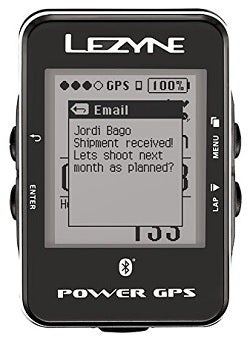
It is incredibly easy to configure and navigate, and its data-tracking functions are consistent.
It also includes additional GPS tracking that utilizes more than one satellite, so your routes will still be tracked even if you travel under trees or around tall buildings.
One of the features I like best about the Lezyne bike computer is that it will also sync with your phone and receive texts while you’re riding.
Now you don’t have to pull out your phone to check your messages in the middle of your ride.
Pretty cool, not too mention its safer, especially if your in an urban area or busy highway.
The texts will simply appear on the screen. The lithium ion battery has the longest battery like of any of the computers evaluated.
You won’t have to worry about this device dying even during your longest rides, as long as your charge it regularly of course.
This bike computer has ANT+ heart rate and cadence compatibility plus it is also Bluetooth compatible. The user interface is easy to use and has a short learning curve to using all of its features.
The Lezyne bike computer connects to satellites incredibly fast. After you mount it and turn it on, it should be connected and ready to go by the time you put your helmet on.
Video: Overview of the Lezyne Power GPS.
Another great touch to this inexpensive bike computer is its appearance. The device looks sleek, having a glossy black finish. This bike computer feature rich for a very reasonable price.
In my opinion the Lezyne Power GPS is the best bike computer under $200.
#5 Raniaco Bike Computer
Perhaps the term “bike computer” is not the best description of the Raniaco. It records and displays all the basic information you would want to know about your bike ride without paying for extravagant features you may not need or want.
It is wireless, and includes bright green LCD display, which an easy to read screen. The screen only brightens when it is dark, so battery life is preserved as much as possible.
It is also small and compact taking up a very minimum of space on your handlebars.
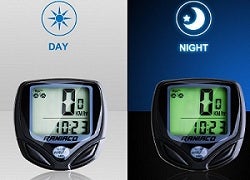
The Raniaco bike computer has all the basic functions you need like a speedometer, odometer, max speed and average speed plus it also it also records your riding time and distance.
It is a very simple solution for those looking an inexpensive bike computer.
Its even completely waterproof, so you won’t have to worry about rain or mud ruining the computer.
Above all, the best part is probably the ease of installation, just attach the included sensor to your front wheel. No wires to run because the sensor is wireless.
Because the device is simple to use you won’t have to worry about spending a lot of time trying to figure out complex menus to use the functions.
If you are just looking for some basic information about your rides the Raniaco is your best bet.
Bike Computer Comparison Table
| Bike Computer | GPS Enabled | Cadence Sensor | Heart Rate | Screen | Rating | |
|---|---|---|---|---|---|---|
| Garmin Edge 810 | Yes | Yes, ANT+ or Bluetooth | Yes, ANT+ or Bluetooth | 2.6" Color touchscreen | 4.2 / 5.0 | |
| Magellan 315hc | Yes | Yes, ANT+ | Yes, ANT+ | 3" Color touchscreen | 2.8 / 5.0 | |
| Garmin Edge 25 | Yes | Yes, ANT+ | Yes, ANT+ | 1.5" B&W | 4.2 / 5.0 | |
| Lezyne Power | Yes | No | No | 2" B&W | 4.1 / 5.0 | |
| Raniaco Bike Computer | No | No | No | 1.7" B&W | 3.7 / 5.0 |
How to Choose the Best Bike Computer For You
- What Are the Different Types of Bike Computers?
- Ease of Use
- Screen Size
- Interface
- Start Time (for GPS bike computers)
- Battery Life
- Data Transfer and Smart Phone Integration
- Bike Computer Setup
- Features
- Water Resistance
- Versatility
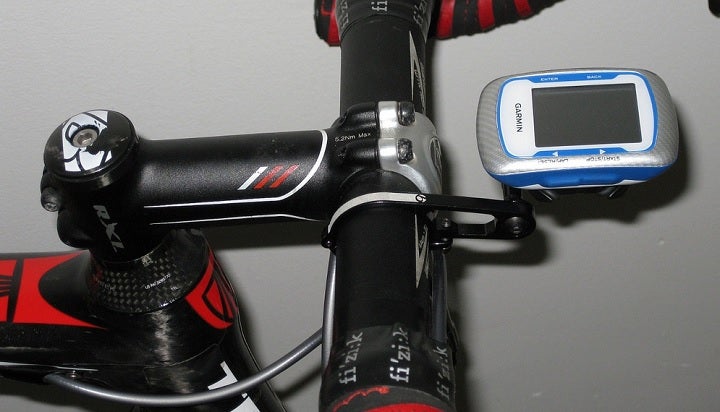
There are many reasons why you might want to upgrade your bike rides with a bike computer.
If you are looking to track your routes, log your cycling data, or monitor your speed, heart rate, and cadence, a bike computer is the best way to do this.
Now, instead of needing to download multiple mobile apps or purchasing multiple devices to attach to your bike; you can do it all with a bike computer.
Whether you’re a more casual rider, a mountain biker, or a competitive cyclist, you will find benefits in using a bike computer. Many are reasonably priced, and will conveniently attach to any bike you own.
Also, many offer ways to connect to tracking apps on your phone so you can network with your friends and family. These features allow you to transform your basic rides into interconnected tracking experiences which you can share with the rest of the world.
Different Types of Bike Computers
There are many different kinds of bike computers available, and their differences can seem very complex. Do not feel overwhelmed however, most provide the same fundamental features, with some slight variations between them.
There are more advanced types, and there are very simple types for less serious riders. In short, the two basic types of bike computers are GPS-enabled bike computers and non-GPS bike computers.
Though as technology gets cheaper, most bike computers now have GPS embedded within them.
Non-GPS Bike Computers
These devices are most beneficial for measuring heart rate, cadence, and body and outside temperatures.
Many of these bike computers will also measure the speed and distances of your rides, and then provide you with maximums and averages for all data collected. These bike computers log data typically via wired sensors.
GPS-Enabled Bike Computers
These computers typically provide more accurate measurements of speed and distances because they use GPS signals in addition to third party sensors instead of wired sensors. The data collected is usually far more detailed than non-GPS bike computers.
Also, these devices offer many ways to connect to your phone or PC and download the information about your rides. They tend to be more expensive than computers that do not have this capability.
In addition to these variations, bike computers can differ in size, color, shape, weight, and basic functionality.
Ease of Use
Incorporating the use of a bike computer adds a new dimension to your bike rides. Once configured they can enhance your rides entirely with quite a bit of data. It is important to not become overwhelmed with the setup or the complex nature of their functionality.
Even though all of the bike computers reviewed in this list can be learned and utilized easily in order to improve the overall quality of your rides, Garmin products are well known for their easy-to-use interfaces.
The Garmin Edge 25 Cycling GPS and the Garmin Edge 810 GPS Bike Computer are the devices you want to look for if ease of use is a high priority.
By interface, we mean how easy these devices are to navigate and get to the features you need. The process of learning how to best use your bike computer can be complicated.
Screen Size
Many bike computers available now are a pretty close in size, but some are notably small like the Garmin Edge 25, and others are inconveniently large. While being larger makes it easier to read the screen, it might get in the way on your handlebars.
Interface
Does the device have a color screen, or is it black-and-white? Some devices still use black-and-white screens, which can make them harder to see as you are riding.
Navigating the menu systems on some bike computers can be daunting and difficult to learn. Personally I prefer ease of use to having features I never use.
If you’re worried about screen visibility in the dark, then you should absolutely select a model with a backlight feature. Sure, you could shine your helmet light on the screen, or even your smartphone flashlight, but that’s nowhere near as effective as a backlight.
Also, think about the data screens. Certain devices have it set up with data restricted to just one screen, while others allow you to scroll through various screens by pushing a button. You can also customize the screens on some, while others only have one option.
Magnetic models are going to have a fixed font size. If that size works for your eyesight, great! But if not, then you’re kind of out of luck. GPS models usually allow you to change the font size.
If the font isn’t big enough for you to read comfortably, that’s not a good sign. Then when you add in the road vibration, it’s going to be even more difficult.
Start Time (for GPS bike computers)
Another aspect to consider is the startup time of the GPS. You do not want to be waiting around, ready to ride, and your computer taking forever to acquire satellites.
Of course, faster is better. The Garmin products reviewed in this article take only 30 seconds or so to boot up after you press the power button.
By the time you lace your shoes, or get your water bottle in place the computer should be ready to go. Once powered on, these devices operate very reliably and can be used while in a forest, mountain biking or urban areas.
Battery Life
Battery life is another essential element to consider when selecting a bike computer. You want your charge to last throughout the duration of your ride. The ideal computer will keep a charge that lasts for several rides.
Garmin Edge products, such as the Garmin Edge 810 and the Garmin Edge 25, tend to have the best battery life. If you go on all day rides this will be more of consideration and you will want to consider these computers first.
Data Transfer and Smart Phone Integration
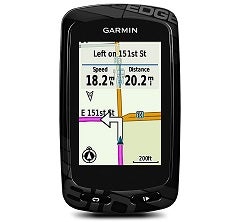 One primary benefit of modern bike computer technology is the ability to transfer data about your routes and rides to your computer and data tracking websites like the Garmin Connect website.
One primary benefit of modern bike computer technology is the ability to transfer data about your routes and rides to your computer and data tracking websites like the Garmin Connect website.
If you are serious about collecting and logging information such as the distance you traveled, your heart rate, your speed, etc., you want to ensure you select a bike computer with data logging/transfer capabilities.
Data transfer can be done in two ways. You can connect the a Micro USB cable to your computer, or you can use a smart phone application that uses Bluetooth.
Many of the computers reviewed in this article can be set to “auto upload” mode where your data will automatically be transferred to a tracking database on your mobile device.
This feature eliminates the need to manually upload information yourself and makes for trouble free operation.
Garmin devices conveniently connect to an app named Garmin Connect, which must be navigated carefully, but allows you to log, track, and organize your ride data. Lezyne devices connect to a similar app named Lezyne Ally.
There are also other individualized applications you may find for other bike computers, but these two are the most popular. With the advancement of technology, more and more bike computers are shifting away from the Micro USB cable, so it is best to get a computer with Bluetooth compatibility.
Setup
Regardless of which bike computer you purchase, you will need to configure it. Setup is another important factor you need to consider when selecting one.
Do not be deterred by more complicated setups, its a one time thing. Sometimes bike computers with more features and accessories just take more time to configure.
Nearly all of the bike computers come with detailed manuals in the box or websites that have online manuals and/or videos showing you the configuration steps.
Features
Before selecting a device, you will want to figure out which features matter most to you. Bike computers vary greatly in complexity, and come with a large variety of features.
Researching these features before deciding on a device can save you money, many of the more expensive computers may include features and functionality you don’t want or need.
Some Key Features to Consider:
- Bluetooth compatibility
- ANT+ compatibility
- Stress score
- Ability to communicate with smart phone
- Live Tracker
- Method of data collection
- Mapping and route options
- Turn-by-turn navigation capability
The Garmin Edge 810 is the most feature-rich bike computer available today. If you are looking for a bike computer with the most capabilities, this is the device for you.
It will require a longer setup and take more time to master, but it will provide you the most options for your rides.
Garmin, Magellan and Lezyne computers offer many different features, and are all fairly similar with only a few minor differences in functionality.
Other brands may offer a few of the features, but will likely not include all of them. Nearly all bike computers provide basic features, such as data collection of heart rate, speed, and distance.
Water Resistance
Water resistance is another factor to consider depending on how you ride. If you are into mountain biking you will likely get mud and water on your bike computer.
Even if you are not planning on riding during rainy weather, you’re bound to find yourself caught in a rainstorm eventually.
You will not want your bike computer to get ruined by a little water. Fortunately, nearly all bike computers can handle having water splashed on them without a problem.
Versatility
Finally, you will want to consider the versatility of the bike computer before purchasing. If you plan to take many different types of rides (e.g. casual night rides, serious mountain rides, muddy bumpy rides), and you use multiple bikes for these rides, you want to ensure you can easily transfer the device between bikes.
If this describes you, make sure you can easily transfer the computer and you can buy extra mounts and sensors. Most Garmin products fit this criteria, and are easily transferable between bikes.
You will also want to be able to collect data for multiple types of rides in different environments.One you main considerations if you frequently ride on the roads you will probably want a bike computer with mapping capability and even better, turn by turn navigation.
Its usually a good idea to buy a bike computer with more functionally than you think you will need. Once you start using one you will most likely want to use it for tracking more and more things.
Type of Riding
What kind of rider are you?
This is a question to be seriously taken into consideration when selecting the best bike computer for you.
Casual Riders: These types of cyclists only want the simple stats like distance, speed, and time they’ve been going.
Enthusiast Riders: If you’re an enthusiast, a regular commuter, a touring cyclist, you may want a few more details than casual riders. You may want to know how long of a distance your trip is, the average speed you travel at, the max speed you reach, and the total odometer.
Competitive Riders: If you classify yourself as a competitive cyclist, you’re probably going to want to know just about everything you can about your performance. Cadence, heart rate, elevation gained, power output, and more should be included.
FAQs About Bike Computers
Q: Which type of bike computer is more accurate?
A: Generally speaking, a GPS bike computer is going to be the more accurate/reliable option in comparison to your smartphone with the app of your choice. If you’re set on a magnetic model, you aren’t out of luck. Some can come extremely close to GPS models if the code for your tire size is properly entered into your device.
Q: If I lost the wheel magnet to my magnetic bike computer, can I find another one?
A: Absolutely! You can typically find replacement magnets at your local bike shop, or outdoors stores.
Q: What should I do if my computer isn’t working?
A: You may be tempted to immediately take it in to a bike shop to have them look at it. Before you go, however, make sure to do some troubleshooting to rule out these common possibilities:
Sensor Position: It’s relatively easy to bump the wheel sensor out of its proper position. First, take a look at the alignment and gap between the wheel sensor and the spoke magnet. Of course, if you don’t have a magnetic bike computer then this wouldn’t apply.
Battery: You’ll find that in magnetic wired units, they’ll have a battery in the display, and in magnetic wireless units, one in the wheel fork transmitter. If you’ve had yours for at least two years, you’ll want to replace the battery.
Mount Connection: Check to ensure the display unit is properly connected to the mount. If you’re unsure, remove it, then click it back on again.
Wire Connection: Of course, this will only apply to wired models. Occasionally, the wire will come loose from the mount, or get worn down rubbing against the frame. Make sure the wire is in good condition, and if not, you may have to replace your model.
Q: If the battery dies, is my ride data lost?
A: Nope! You can simply recharge, and even replace batteries without losing your data.
Q: Can’t I just use my smartphone?
A: Sure, you can. Just keep in mind that there are some downsides. First, cycling computers are much more accurate. They’re also specifically designed to work with your bike, and come pre-loaded with tons of programs and displays exclusively for that purpose. You can also customize them more, so you can select the info that you want to display.
Perhaps the biggest upside to opting for a bike computer over a smartphone, is the ability to hold up to the elements. Smartphones are notorious for getting harmed in harsh weather. Bike computers have a sturdy chassis typically, so this won’t be an issue for them. They’re also made to be able to hold up better if you do by chance, crash.
Tips For Picking Out a Bike Computer
Tip #1: Watch your cadence
Having a cadence sensor will allow you to break your barriers and to test out other cadence ranges to determine what works best for your training purposes. For example, you may find your current cadence has built up your leg strength well. Experimenting with a different cadence range may improve neuromuscular coordination. Depending on what you’re aiming for, you’ll want to achieve the proper range to get the most out of your training session.
Tip #2: Find new routes
Not only for training purposes, but for also avoiding burn-out, you should try to find fresh routes every now-and-then. There are some computers which have the feature of letting you plan out a path anywhere you’d like, while providing you with some of the most well-known and even “secret” routes.
I hope this guide was helpful for finding the best bike computer to fit your needs. If you want to comment or recommend one I didn’t include, please use my contact form to get in touch.
Have fun and be safe out there!
How We Researched
To come up with the top bike computers, we researched a variety of sources for reviews such as CompetitiveCyclist, JensenUSA, REI, EVO along with our own personal experience.
We also consulted online magazines for product research and reviews to get as much unbiased information as we could. To help weed out fake reviews we used Fakespot.com to make sure we only looked at genuine reviews.
With so much quality gear available, we had to narrow it down based on what we felt were the best options were for the price. The staff authors have a wide and varied background in road cycling, racing and bike packing.
The authors have decades of experience in cycling and eager to share their knowledge with readers.
To help narrow down the selection we used personal experiences along with recommendations from fellow cyclists, bloggers and bike shops.
After extensive research, we came up with our list to help you choose the right one for you.

